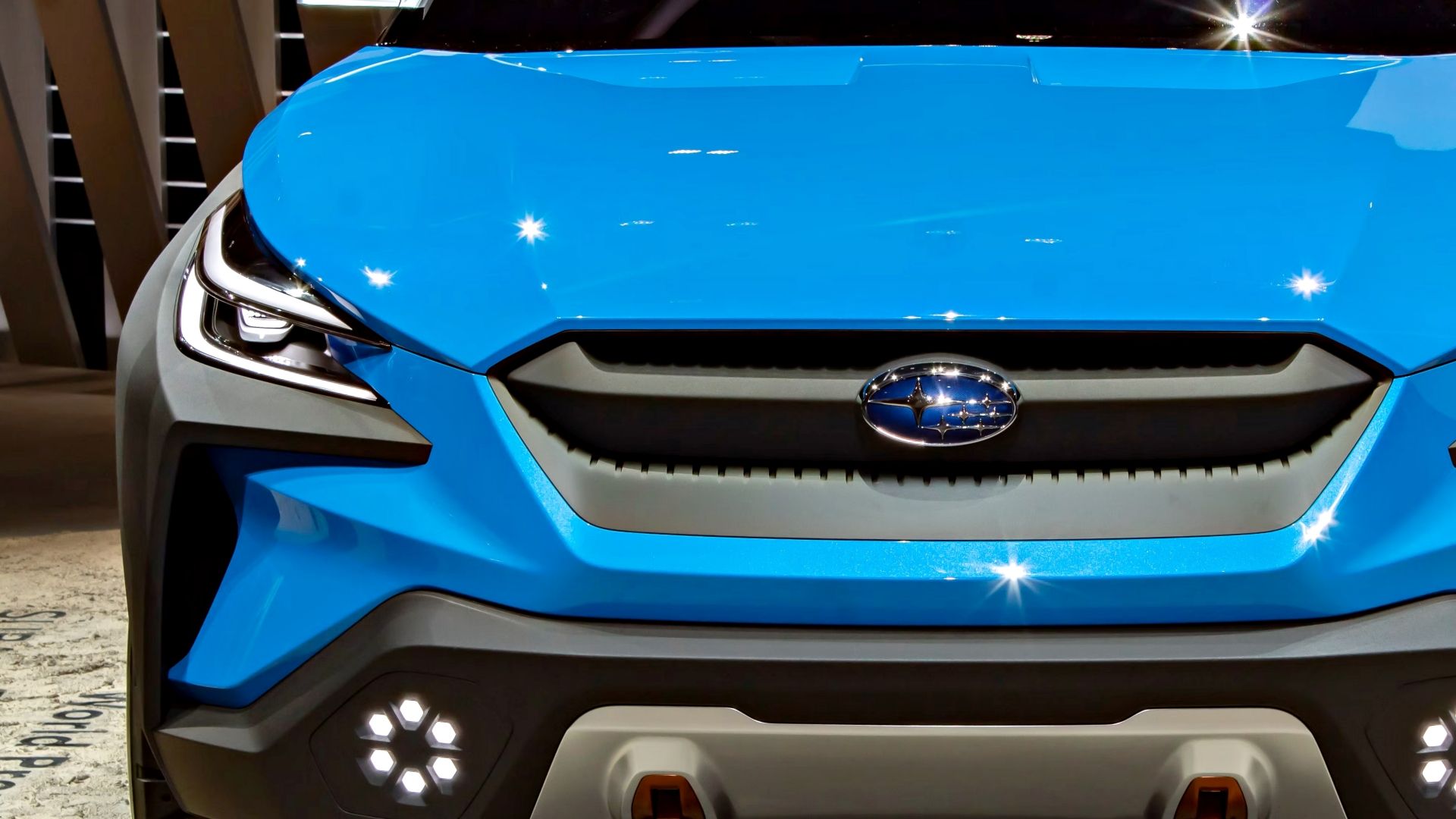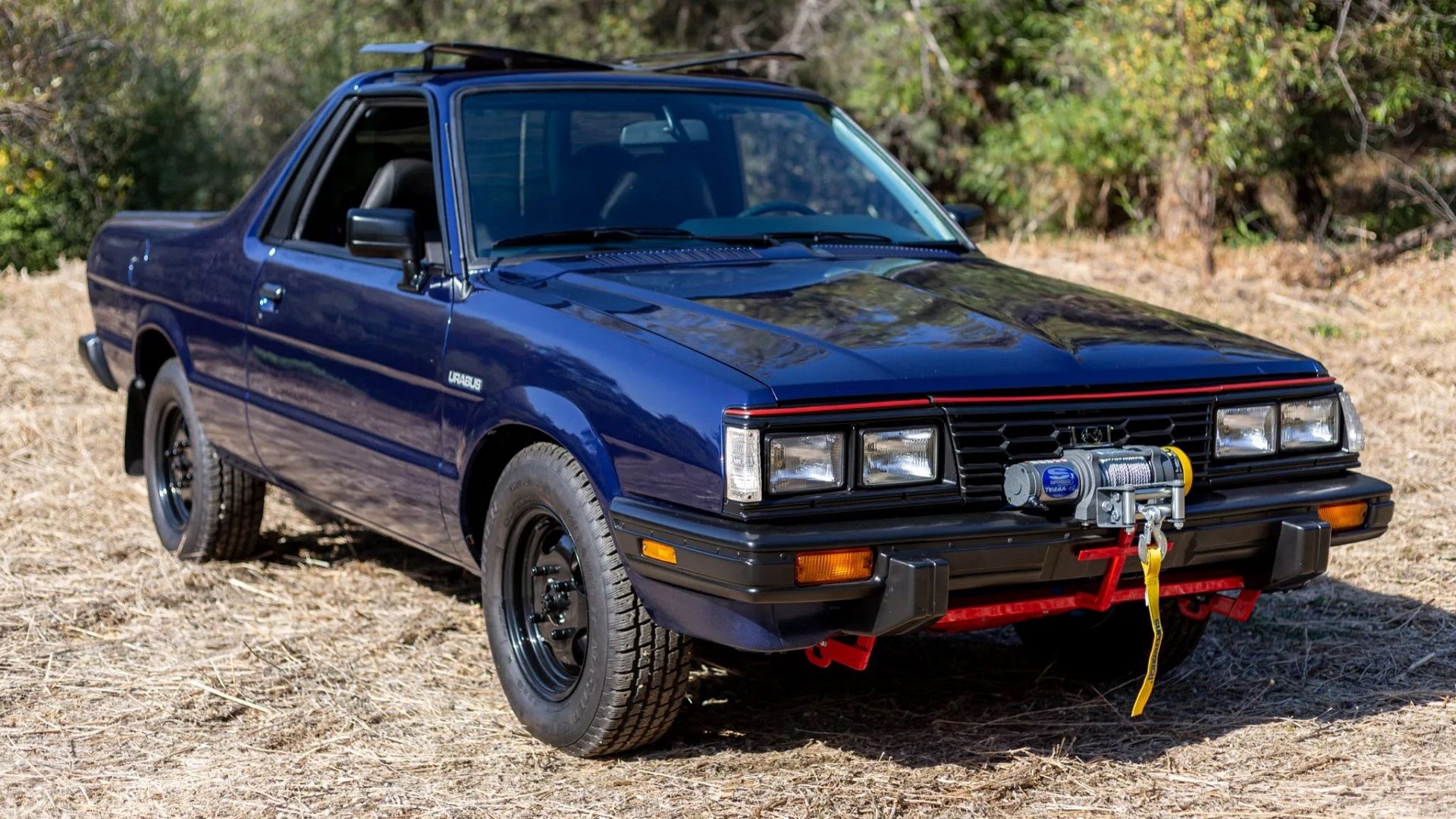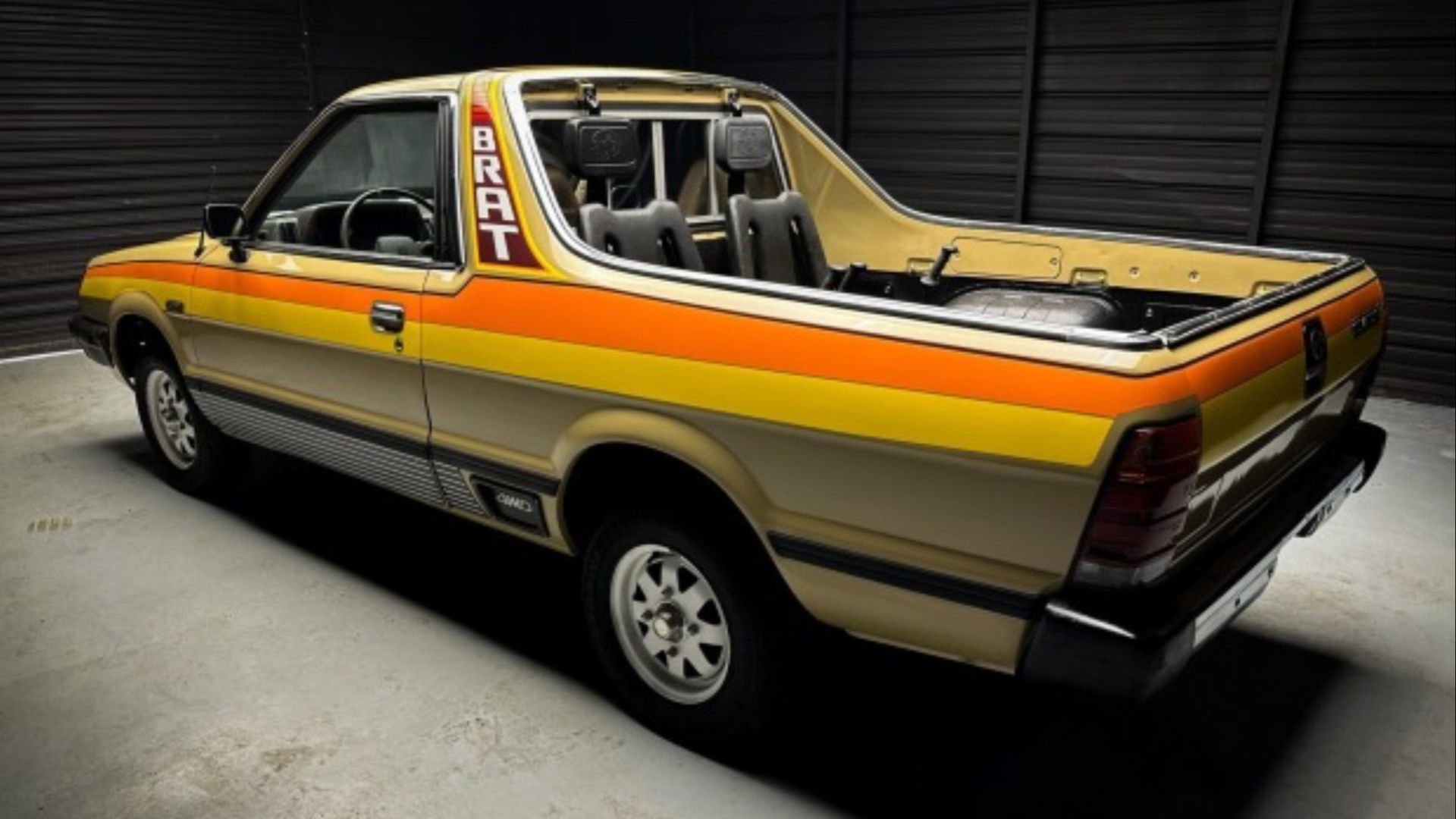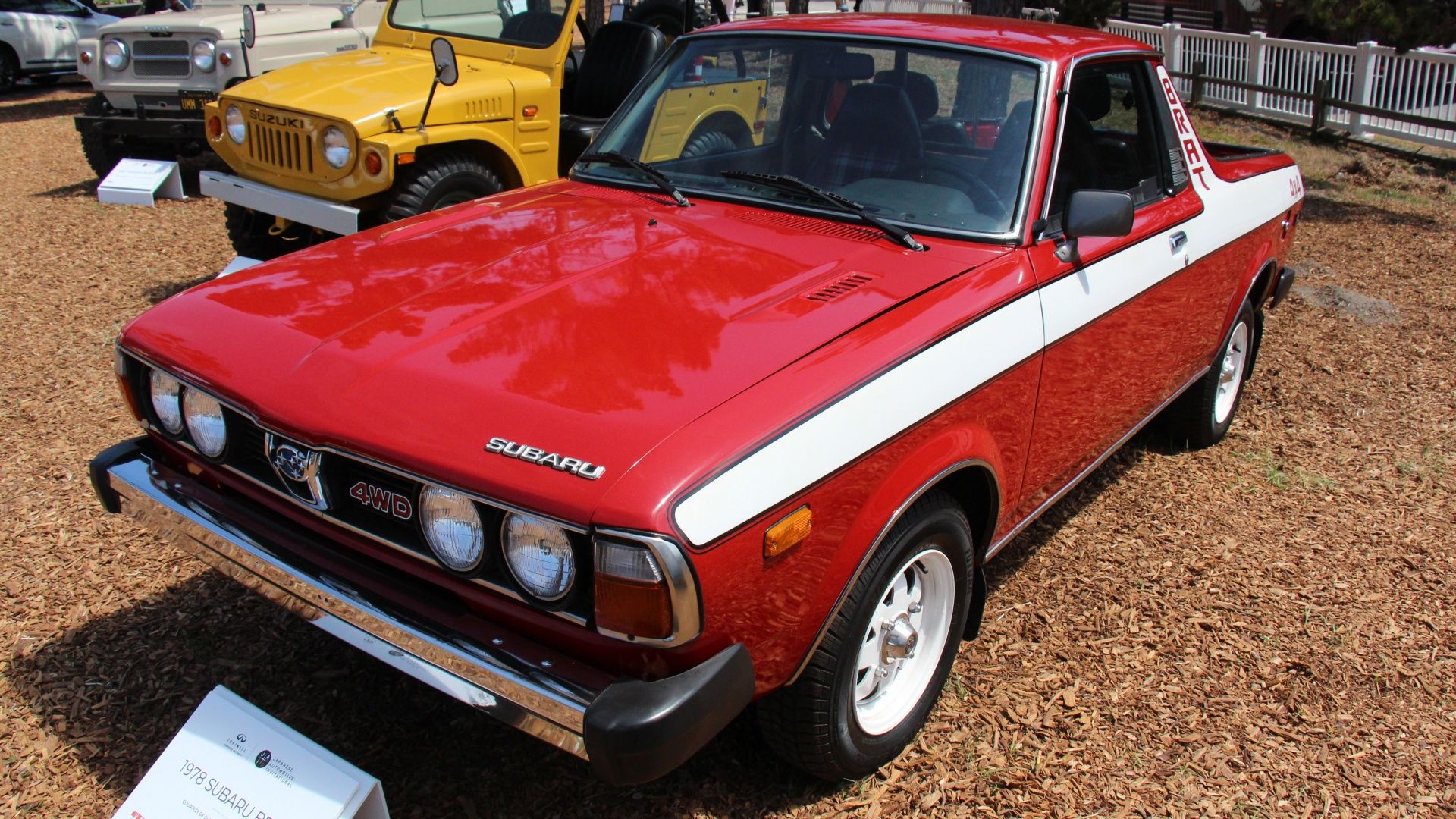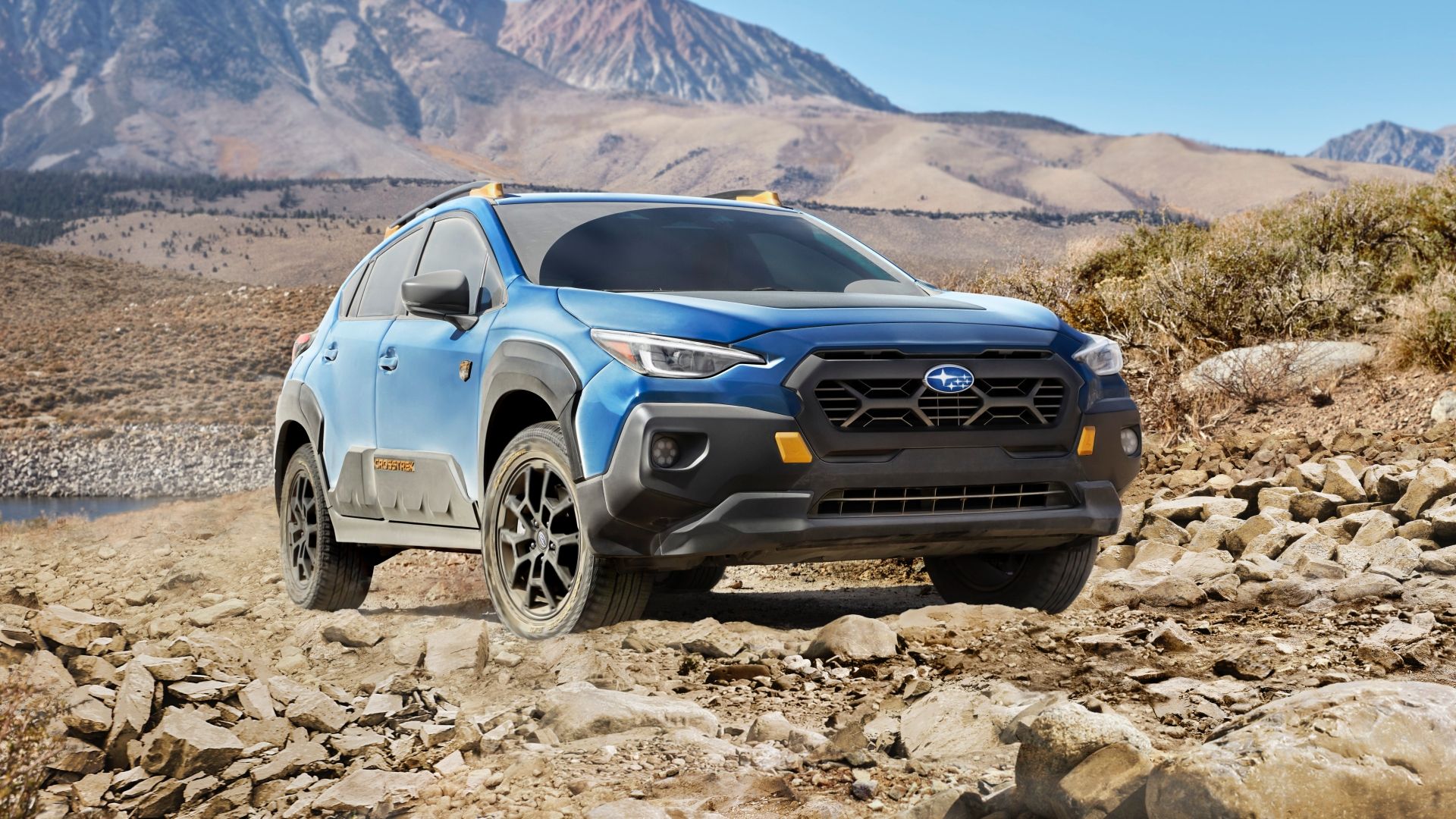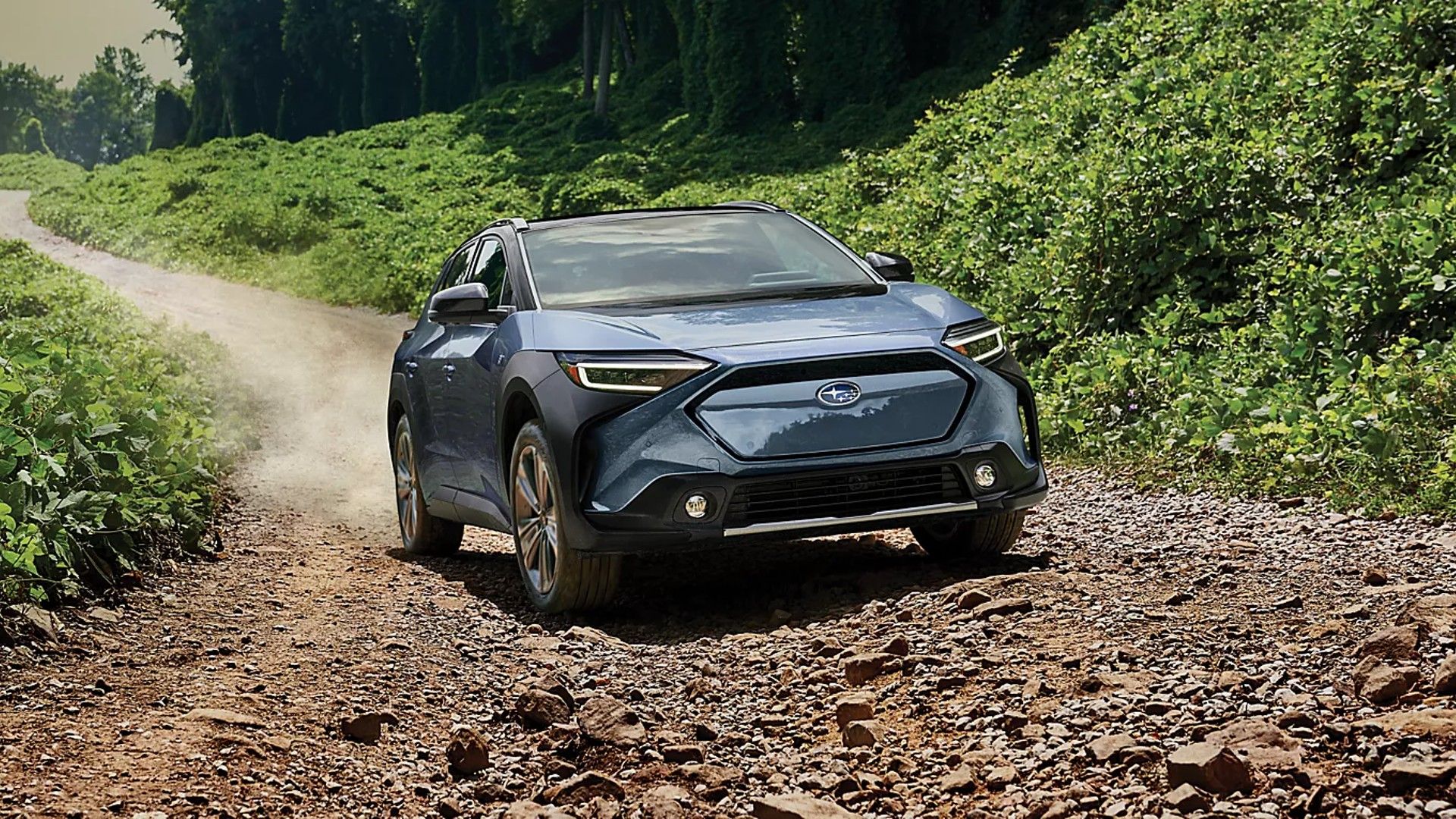Summary
- The Subaru BRAT, a compact pickup truck with unique rear-facing seats in the truck bed, was inspired by coupe-based light utility pickups and had the advantage of all-wheel drive. It was discontinued in 1987 and later revived as the Baja, which was also discontinued due to slow sales.
- There is a strong case for Subaru to build a new compact truck based on one of its models, given the rising popularity of compact pickups and the success of competitors like the Ford Maverick and Hyundai Santa Cruz. A Subaru compact pickup would be a strong competitor with its standard AWD and boxer engine.
- Subaru already has the fundamentals in place to create a modern-day BRAT or Baja successor. They can use existing compact crossover SUV platforms like the Crosstrek, Forester, or Outback and convert them into pickups. The interior design and technology of the new Subaru pickup would likely be similar to their current models.
Remember the Subaru BRAT (an acronym for Bi-drive Recreational All-terrain Transporter)? Introduced in 1978, it was one of the original compact pickup trucks back in the day. Subaru was inspired by other coupe-based light utility pickup trucks like the Chevrolet El Camino and Ford Ranchero, though the BRAT's roots were from the Leone wagon. Perhaps one of the most unique characteristics of the design, one that was used to work around a pickup truck tax that imports would typically have to pay, were two rear-facing seats placed in the truck bed, tucked right up next to the vehicle's cab.
As a result of the combined inspiration, the BRAT got the advantage of all-wheel drive (AWD) as opposed to its competitors' two-wheel drive (2WD) layout. The BRAT continued to be sold until 1987 when the Japanese automaker stopped importing it into the United States. The idea of a Subaru compact pickup was once again revived in 2002 in the form of the Baja. Like the BRAT, the Baja was based on an AWD wagon, in this case, the highly-successful Outback. It again was discontinued in 2006 due to slow sales--especially since it was priced so closely to the Ford F-150 and Chevrolet Silverado--both of which are bigger trucks.
With compact pickups now on the rise, a case for Subaru to build a compact truck based on one of its models is stronger than ever. And, of course, rumors are flying that a model will be produced for consumers across the pond in Europe, or even one limited to Australia, that will be called the Subaru Baja Wilderness. So, should Subaru do it and revive the BRAT nameplate?
Updated on August 22, 2023: The Subaru BRAT was an excellent compact truck that deserves as much recognition as possible. So, instead of letting this article get buried in the multitudes of other dead articles online, we have decided to refresh and update it with more data to keep you informed with the most up-to-date information.
A Subaru BRAT Makes So Much Sense In 2023
While it can't be said for sure what Subaru's engineers have in mind right now, the case for a modern-day BRAT, or even a Baja successor, is stronger than ever. In fact, Subaru's current lineup of highly-popular crossover SUVs with standard AWD serves as the perfect base for a unibody compact pickup. Most people would not be surprised if Subaru was developing one as you read this.
But what are the chances of Subaru actually making one? Speaking to CarsGuide, Subaru's managing director Blair Read says,
"We are always listening." A similar situation happened with the Outback. Customers wanted a turbocharged version, and now they're offering an XT version. We heard the feedback on Outback. We heard the demand from the public and the Subaru buyers saying they wanted a turbo Outback. Tick! It's here," Read said. "We always listen to the customer. It's not: what do we think? It's: what is the customer saying - what are they looking for?"
Listening to what some customers want, compared to what the trends and the financial forecasts say, are totally different things, though, which is perhaps why a version of the BRAT has not yet been brought back into the lineup. For example, the Baja was not too long ago when it was produced, from 2002 to 2006, and it did not sell close to its projected amounts.
In fact, Subaru had a projection of selling 24,000 cars per year, but when it all was said and done, the company could only sell a combined total (from 2003 to 2006) of 30,000. That makes it hard for the executives at Subaru to step up and try the design again, knowing that it could put them in the red even further than it already has.
On the other hand, there is a strong case for a BRAT, or Baja, to be produced with all the modern technology, including the possibility of a hybrid or electric powertrain, simply because of the success of the Ford Maverick and Hyundai Santa Cruz today.
We know that the Maverick is the more popular of the two since the Santa Cruz wasn't as huge of a hit next to what Ford is making. A Subaru compact pickup would definitely be a strong competitor to these two models. The standard AWD and boxer engine are great recipes for a compact pickup that handles amazingly in the bends and when going over the rough stuff.
What Vehicle Could The BRAT Be Based On?
Creating a modern-day Subaru BRAT or Baja successor wouldn't be as hard as you think--thus making the case for creating one very strong. The Hyundai Santa Cruz is essentially a restyled Tucson that was given a bed, but the resulting design, to your eyes may be more Subaru than Hyundai.
The fundamentals are already there for Subaru. Turn an existing compact crossover SUV platform into a pickup, re-engineer the suspension and chassis to accommodate the bed's functionality, and Subaru has probably made the best investment decision in their life. The R&D cost is extremely low, but the potential sales could be very high.
In this case, Subaru could use two vehicles as a basis for their compact pickup. They could either use the recently-redesigned Subaru Crosstrek, the Subaru Forester, or the midsize Outback wagon just like before. Regardless of which vehicle they use, both models ride on the highly-flexible Subaru Global Platform (SGP) that underpins literally every single model they sell in the United States except for the rear-wheel drive (RWD) Subaru BRZ.
Regardless of which model could be used as a foundation for a future BRAT or Baja, the design won't radically differ from what Subaru currently offers. The distinctive design has never been a Subaru thing, and that's unlikely to change moving forward.
It's safe to assume that a future Subaru compact truck will look like a Crosstrek, Forester, or Outback but with its rear compartment removed in favor of a bed. Expect a Wilderness version with chunkier cladding, smaller wheels, all-terrain tires, raised suspension, and copper accents to be part of the mix as well.
Subaru interiors have improved over the years, but in terms of design, they're not breaking any ground. As with every new Subaru nowadays except for the BRZ, expect an 11.6-inch portrait Subaru Starlink touchscreen infotainment with Apple CarPlay, Android Auto, and a pair of analog gauges with a small multi-information display in the middle.
Again, nothing groundbreaking in design or tech, but just using the design the brand has utilized for the past few years. The dash design of the new Crosstrek and Impreza, along with the Outback, is practically the same, if not slightly tweaked to match each model's character. So it is safe to say that the interior design of a new Subaru BRAT would be of the same style and design that is currently being used, with a different nameplate.
Have A BRAT With An ICE Powertrain, Or Hybrid Like The Crosstrek?
Like the outer design of this future Subaru pickup, it is not expected to come straight off the assembly line as anything groundbreaking. In fact, for a trial run, it may be a good idea for the company to stick with what they already have and release a model with an ICE engine under the hood because that is what they have built their name around.
The little boxer engine that can run forever as long as you give it a little TLC and routine maintenance. To cater to the buying customers that demand a little more, they can always offer a couple trim levels above the base level with more power and some added options.
Subaru Boxer Engine Statistics
2.0-liter Boxer | 154 horsepower | 151 pound-feet of torque |
2.5-liter Boxer | 192 horsepower | 174 pound-feet of torque |
2.4-liter turbocharged Boxer | 271 horsepower | 258 pound-feet of torque |
The one thing about this strategy that Subaru will need to keep in mind is that even though the Boxer engine has given them a majority of their popularity, times are changing. Consumers like you want to flow with the trends just like everyone else, which means that you are leaning more toward electric cars than ICE versions.
However, you may still be a little skeptical about them. Which is why Hybrid models are so popular. They are the perfect in-between models to get you used to power through electric motors, while still giving you the internal combustion engine you are so used to.
Thankfully, Subaru already has great Hybrid technology in models like the Subaru Crosstrek and Forester. It would not be too difficult to convert those Hybrid systems over to a model such as the BRAT, especially if one of those models became the foundation for the new Subaru pickup.
The Lineartronic CVT and Symmetrical AWD would work great on a small compact truck, and since the American market is starting to embrace the idea of a vehicle that is part truck, part car, the original BRAT with modern looks and technology would make people stand up and take notice.
But What About A Truck Version Of The Solterra EV?
Okay, this one's a very bold move if Subaru ever decides on such an idea, but turning the Solterra electric crossover into a modern-day BRAT or Baja is possible but extremely unlikely. If we know one thing about Subaru, that would be that they will do what they can to continue maintaining its huge cult following. Creating a truck version of the Solterra is a radical idea that could bring in a new type of customer to the Subaru brand, but one that will alienate its existing customers.
The case for a truck version of the Solterra is also very weak. For one, the Toyota bZ4X on which it shares its foundations isn't even a great EV in the first place. The range is subpar, which means turning it into a truck will essentially make this a toy.
Also, the electric truck market is fierce right now, thus making the case for a truck based on the Solterra even weaker. The Solterra has a base price of $44,995, which puts it right in the same price range as base versions of the bigger and significantly capable F-150 Lightning and the highly-impressive Silverado EV.
Possible BRAT EV Specifications
Motors | two electric motors |
Combined Power | 214 horsepower |
Combined Torque | 248 pound-feet |
Transmission | direct-drive |
Drivetrain | all-wheel drive |
Range | 222 miles |
If you look at it from a broader perspective, though, having at least an option, such as a trim level, would make sense. This is because Subaru has already stated that they will work hard to be at 40 percent of global sales to be electric by the end of this decade and by the early 2030s to have an all-electric lineup.
Needless to say, if those goals are going to be met, any new models need to have some semblance of electrification built into them. Otherwise, Subaru will take steps backward when they need to take strides forward.
Should Subaru Build A Modern-Day BRAT?
Yes, they absolutely can and should. The compact pickup market is hot right now, and Subaru has one of the strongest following of fans in the United States. In addition, they already have a solid model range where a compact pickup can be built with minimal research and development costs.
The only problem that Subaru would face with adding a new model into the lineup is getting people to embrace it because, let's face it, even though the actual designs have changed with modern times, the idea of the small SUV that started back with the Subaru 4x4 Wagon in 1975 still lives strong in the styling. When the company has shied away from that notion, such as with the BRAT and the Baja, sales were not nearly as high as expected.
On the flip side of that coin, even if it won't sell in the same numbers as a Ford Maverick, the low investment cost for such a model means that Subaru doesn't necessarily have to hit high sales targets for the project to be profitable. The only challenge now is where the Subaru pickup should be manufactured and whether there is room for it in their existing production line.

